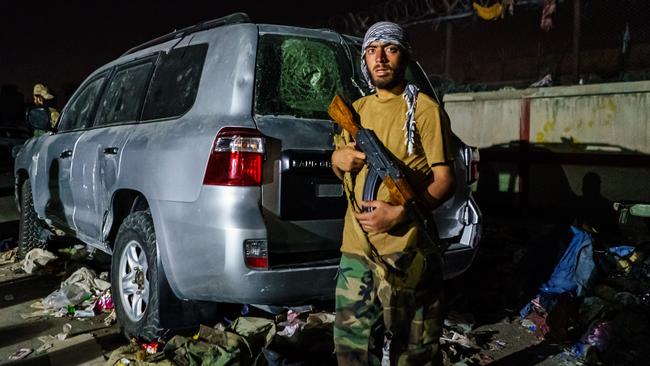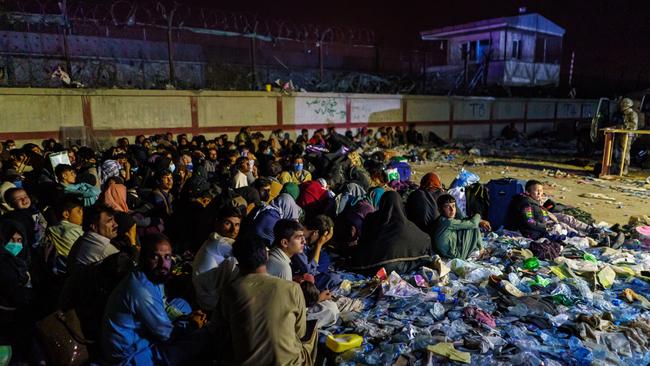Who ISIS-K is and why they don’t fight with the Taliban
The Taliban has a new terror force to contend with in Afghanistan. After their twin attacks on Kabul, we look at who ISIS-K is and what they want.
World
Don't miss out on the headlines from World. Followed categories will be added to My News.
And so it begins again.
Twenty years after Coalition forces including more than 39,000 ADF troops pursued al-Qaeda into Afghanistan and around the world to stamp out the scourge of terrorism, a new “war” is set to start again.
Unlike in 2001, technology has moved on and boots-on-the-ground warfare will not be in such great numbers again when drone strikes can be directed from the other side of the world.

But there are two other significant differences that don’t work in favour of Coalition forces, a lack of primary intelligence with evacuations of allies from Afghanistan and the fact ISIS-K is likely to be armed with a huge arsenal of sophisticated “Made in America” weapons courtesy of the rapid withdrawal from the embattled nation.
As the Taliban swept across Afghanistan to reconquer the country, such was the stockpile of weapons they were unable to secure all of them. When the Taliban also opened jails to release thousands of its supporters, they also released several hundred of its enemy in ISIS-K.

It is these guys that US President Joe Biden today vowed to hunt down and given the expressed horror from other West nations, he will likely be joined again in a new coalition.
Ironically, under the sentiment my enemy’s enemy is my friend, an unholy alliance may have to be forged with the Taliban to fight this latest threat.

ISIS-K, a splinter group of ISIS from Syria, was created in 2015 from disgruntled Afghan Taliban fighters and militants from Pakistan. But its leadership was decimated since that time by US fighter and drone strikes with its latest leader Abdullah Orokzai captured in April last year by Afghan Security forces alongside 20 of his deputies and commanders.

The terror group was not seen as a genuine threat until this month and the vulnerability created by the foreign force evacuation after the fall of Kabul.
Naming themselves ISIS-K after Khorasan, a historic name for the greater region, the extremists embarked on a series of brutal attacks in Afghanistan that included a 2020 assault on a maternity hospital in Kabul that saw infants and women killed.
But it did not have a firm power base until the opening of prisons, weaponry abandoned by Afghan forces and the opportunity presented by the chaos that has been created by foreign forces and others exodus and the power vacuum from an incoming Taliban administration.
More Coverage
Originally published as Who ISIS-K is and why they don’t fight with the Taliban




